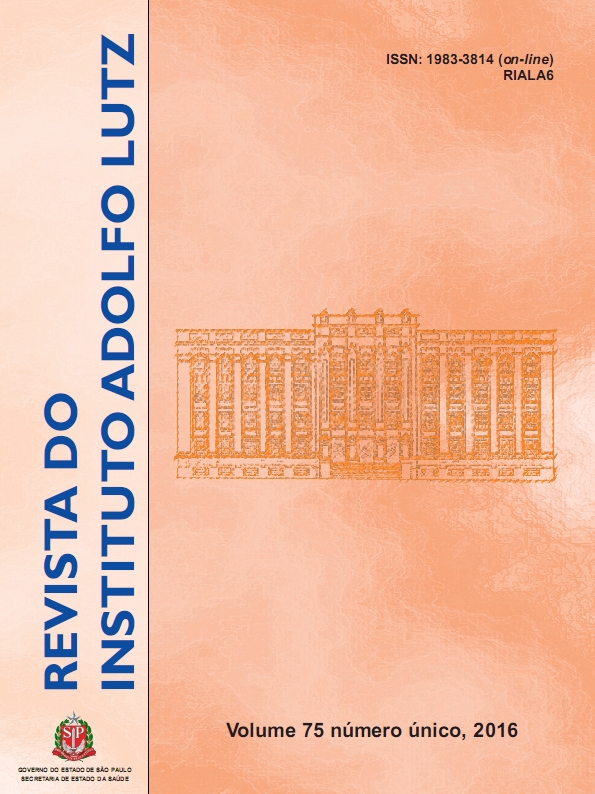Abstract
Cronobacter spp. is an opportunistic pathogen that may cause infections in individuals of any age, and the highest incidence occurs in neonates, immunocompromised patients and elderly persons. This study investigated Cronobacter spp. occurrence in 90 cheese samples (30 “Minas Frescal” type cheeses, 30 “Prato” type and 30 sliced “Prato” type). The isolated species were identified and the antimicrobial susceptibility profile of the isolated strains was evaluated. The microbiological assay was performed with pre-enrichment in buffered peptone water, and selective-enrichment in modified lauryl sulphate tryptose broth containing vancomycin. Isolation and identification were done in Enterobacter sakazakii Isolation Agar and in Vitek 2.0, respectively. The species identification was performed by multiple PCR targeting cgaA gene. Antibiogram was done using agar diffusion method (Kirby-Bauer). Cronobacter spp. was isolated from one (1.1 %) sample of “Minas Frescal” type cheese, identified as C. sakazakii which was sensitive to all of tested antimicrobials. Cronobacter spp. does not represent a risk to the individuals health by consuming cheeses made from pasteurized milk. However, the presence of Cronobacter spp. in one sample of analyzed cheese indicates failures in their production, reinforcing the need for following the Good Manufacturing Practices.
References
1. Patrick ME, Mahon BE, Greene SA, Rounds J, Cronquist A, Wymore K, et al. Incidence of Cronobacter spp. infections, United States, 2003-2009. Emerg Infect Dis. 2014;20(9):1520-3. [DOI: http://dx.doi.org/10.3201/eid2009.140545].
2. Food and Agricultural Organization/World Health Organization (FAO/WHO). Enterobacter sakazakii (Cronobacter spp.) in powdered follow-up formulae. Meeting Report. Microbiological Risk Assessment Genova, WHO, 2008. (15),90 p. [acesso 2015 Dez 17]. Disponível em: [http://www.who.int/foodsafety/publications/micro/MRA_followup.pdf ].
3. Brandão MLL, Umeda NS, Carvalho KR, Filippis I. Investigação de um surto causado por Cronobacter malonaticus em um hospital maternidade em Teresina, Piauí: caracterização e tipificação por eletroforese em gel de campo pulsado. Vigil Sanit Debate. 2015;3(3):91-6. [DOI: http://dx.doi.org/10.3395/2317-269x.00290].
4. Molloy C, Cagney C, O’Brien S, Iversen C, Fanning S, Duffy G. Surveillance and characterization by pulsed-field gel electrophoresis of Cronobacterspp. in farming and domestic environments, food production animals and retail foods. Int J Food Microbiol. 2009; 136(2):198-203. [DOI: http://dx.doi.org/10.1016/j.ijfoodmicro.2009.07.007].
5. Singh N, Goel G, Raghav M. Prevalence and characterization of Cronobacter spp. from various foods, medicinal plants, and environmental samples. Curr Microbiol. 2015;71 (1):31-8. [DOI: 10.1007/s00284-015-0816-8].
6. Mozrová V, Břeňová N, Mrázek J, Lukešová D, Marounek M. Surveillance and characterization of Cronobacter spp. in Czech retail food and environmental samples. Folia Microbiol (Praha). 2014;59(1):63-8. [DOI: 10.1007/s12223-013-0266-2].
7. El-Sharoud WM, O’Brien S, Negredo C, Iversen C, Fanning S, Healy B. Characterization of Cronobacterrecovered from dried milk and related products. BMC Microbiol. 2009;9:24. [DOI:10.1186/1471-2180-9-24].
8. Planzer SB Jr, da Cruz AG, Sant’ana AS, Silva R, Moura MR, de Carvalho LM. Food safety knowledge of cheese consumers. J Food Sci. 2009;74(1):M28-30. [DOI: 10.1111/j.1750-3841.2008.00995.x].
9. Pinto PSA, Nero LA, Germano MIS, Germano PML. Qualidade do queijo. In: Germano PML, Germano MIS, organizadores. Higiene e Vigilância Sanitária de Alimentos. Barueri: Manole; 2011.p.147-66.
10. International Organization for Standardization / International Dairy Federation – ISO/IDF. Technical specification: milk and milk products – detection of Enterobacter sakazakii. ISO/TS22964:2006; IDF/RM 210;2006.
11. Warnken MB, Brandao MLL, Souza AE, Romão CMCP, Nogueira ACMA, Destro MT. Phenotypic profiles and detection of target genes by PCR in isolates from different sources and reference strains, identified as Cronobacter spp. (Enterobacter sakazakii). Rev Inst Adolfo Lutz. 2012;71(1):21-31.
12. Druggan P, Iversen C. Culture media for the isolation of Cronobacter spp. Int J Food Microbiol. 2009;136 (2):169-78.[ DOI: http:/dx.doi.org/10.1016/j.ijfoodmicro.2009.09.008].
13. Carter L, Lindsey LA, Grim CJ, Sathyamoorthy V, Jarvis KG, Gopinath G, et al. Multiplex PCR assay targeting a diguanylate cyclase-encoding gene, cgcA, to differentiate species within the genus Cronobacter. Appl Environ Microbiol. 2013;79 (2):734-7. [DOI: http:/dx.doi.org/10.1128/AEM.02898-12].
14. Clinical and Laboratory Standards Institute. Performance Standards for Antimicrobial Susceptibility Testing. Twenty-Fifth Informational Supplement, Wayne, PA, USA. 2015; 35 (3):M100-S15.
15. Osaili T, Forsythe S. Desiccation resistance and persistence of Cronobacter species in infant formula. Int J Food Microbiol. 2009;136(2):214-20. [DOI: http:/dx.doi.org/10.1016/j.ijfoodmicro.2009.08.006].
16. Platte CS. Cronobacter spp. e outras bactérias patógenas: avaliação da presença e sensibilidade antimicrobiana das estirpes isoladas em produtos lácteos [dissertação de mestrado]. Niterói (RJ): Universidade Federal Fluminense; 2014.

This work is licensed under a Creative Commons Attribution 4.0 International License.
Copyright (c) 2016 Instituto Adolfo Lutz Journal
